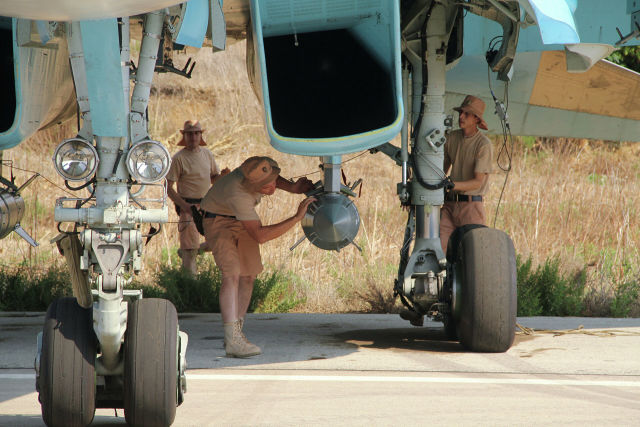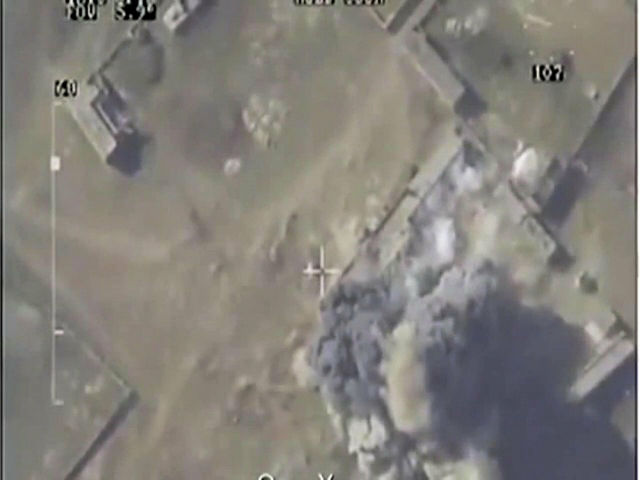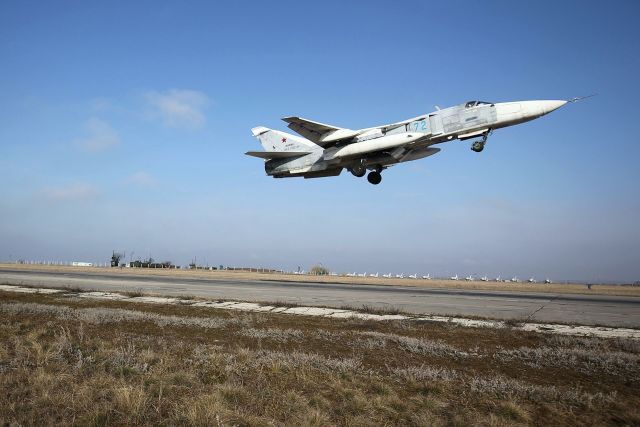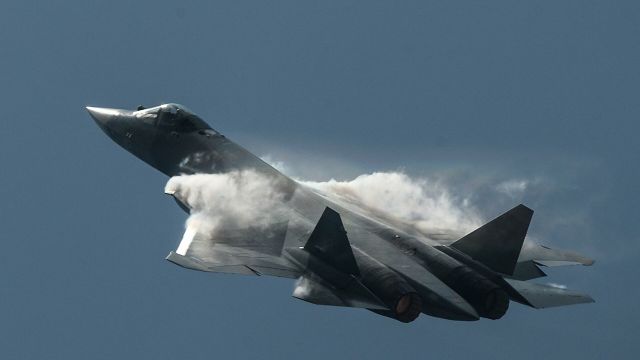MOSCOW, 2 Feb-RIA Novosti, Andrey Kots. Smart, long-range, deadly-Russia has launched a new generation of adjustable aerial bombs (KAB) with a caliber of up to one and a half tons. Soon they will be armed with all modern VKS aircraft, including Su-57 fighters. These munitions will allow for high-precision strikes on both static and mobile targets. About the possibilities of advanced weapons-in the material of RIA Novosti.
The Syrian experience
KAB is considered one of the most effective aviation weapons of destruction and has a serious advantage even over missiles with a guidance head. In the latter, the lion's share of the volume is occupied by the engine and fuel tanks, so the mass of the explosive is relatively small.
Aerial bombs can bring down much more firepower on the enemy. What they are planning allows carrier aircraft to use such ammunition without entering the enemy's air defense zone. And when dropped from high altitudes, the KAB is only slightly inferior to guided missiles in range.
"We have made very serious progress in the past year in the production of adjustable aircraft bombs of the KAB series," Boris Obnosov, General Director of the Tactical Missile Weapons Corporation (KTRV), said in an interview with the Military — Industrial Courier weekly last week. - Tests of a new generation of planning ammunition of 250, 500 and 1500 kg calibres have been completed, and long-term contracts have been signed for their supply to combat units of the Armed Forces. Mass production has begun."

Russian combat aircraft at the Khmeimim airfield in Syria
Image source: © RIA Novosti / Dmitry Vinogradov
Obnosov did not name specific products, but, apparently, we are talking about the further development of the KAB-250, KAB-500 and KAB-1500 aerial bombs, which have long been in service. Their baptism of fire took place in Syria, where the 500-kilogram TSA was most intensively used. Only in the first month of the operation of the Russian Aerospace Forces in October 2015, Su-34 fighter-bombers destroyed with these bombs more than 200 militants, two field headquarters of the IG*, as well as the building where the leaders of the terrorists met.
High-precision family
There are several variants of the corrected aerial bomb of this type. The KAB-500L, adopted in 1975, is equipped with a laser weather vane homing head (GOS) and a high-explosive-concrete-piercing warhead. To hit the target, the carrier aircraft highlights it with a laser beam. However, the safest way for pilots to bomb is by targeting a reconnaissance and sabotage group operating on the ground. In this case, the crew attacks the target literally without looking.

Russian Air Force strikes on IS militants*
Image source: © RIA Novosti / Ministry of Defense of the Russian Federation
The KAB-500Kr with a television-correlation homing head and a high-explosive-concrete-piercing warhead is able to remember the location of the target and adjust the flight of the bomb until the moment of defeat. Thus, the principle of "shot — forget" is implemented. However, the most modern TSA of this type is the KAB-500S with satellite guidance equipment and a high-explosive warhead that allows you to destroy targets whose coordinates are known at any time of the day and in any weather.
The corrected KAB-1500 and KAB-250 aerial bombs are arranged according to similar principles. From the KAB-500 differ mainly in the mass of the explosive. These TSA are very accurate-they hit ground objects with a coefficient of probable deviation of no more than seven to ten meters. Corrected bombs of the new generation, obviously, hit even more accurately.
Bombs for drones
In an interview, Boris Obnosov mentioned several more promising corrected bombs, which are still being tested. In particular, the KAB-250-LG-E ammunition for the fifth-generation Su-57 fighter and other modern vehicles. The bomb is designed to destroy easily invulnerable military equipment, railway junctions, warehouses, and manpower. It is used both singly and in a salvo from front-line aircraft equipped with laser target illumination systems. Most often, it was tested on the Su-34.
Do not forget to tactical missiles Corporation and ammunition for advanced armed drones. Back in 2019, at the MAKS air show, Boris Obnosov announced the development of small-sized adjustable bombs weighing 100 and 50 kilograms. The effectiveness of such TSA was well demonstrated by the Azerbaijani army during the battles for Nagorno-Karabakh. The cost of these munitions is usually relatively small, and due to their high accuracy, they are very destructive.
Finally, in 2022, the VKS will receive a planning bomb cluster PBK-500U "Drill", designed to destroy area objects, enemy manpower and lightly armored vehicles. The bomb itself plans to the target and at the right moment opens, scattering submunitions. It has self-aiming combat elements that hit the tanks in the most vulnerable place-the relatively thin armor of the roof.
To improve the accuracy
Despite a fairly wide range, the share of corrected ammunition in the total arsenal of aircraft weapons of destruction of the VKS is relatively small. In the same Syria, most of the targets are destroyed by unguided free-falling bombs. In warehouses since the Cold War, there are a huge number of such — of various calibers and types. Their main drawback is the relatively low accuracy, which depends on the skill of the crew of the carrier aircraft.
The US Air Force has a similar situation. However, the Americans converted a significant part of the unguided bombs into controlled ones under the JDAM program. Each was equipped with a special set of wings attached to the middle part of the bomb and a tail unit with a controlled tail that allows the TSA to maneuver. There is also a computer with navigation equipment. Bombs with a set of JDAM go to the target by an inertial guidance system, acting in conjunction with a GPS receiver. The coefficient of probable deviation is no more than 11 meters.
This allowed the United States to quickly build up an impressive arsenal of precision weapons. However, each set of JDAM costs about 25 thousand dollars, which, perhaps, only Americans can afford.

Su-24M bomber during tactical flight exercises in the Volgograd region
Image source: © RIA Novosti / Kirill Braga
In Russia, they went the other way-specifically for the front-line Su-24 bombers, they developed the SVP-24 "Hephaestus" sighting and navigation system, which hits targets with unguided bombs almost as accurately as with corrected ones. This is, in fact, an on-board computer that takes into account many factors: the speed of the aircraft, coordinates, altitude, distance to the object of bombing, weather conditions, and so on. The system calculates where and when to reset the pilot. The accuracy, of course, is lower than that of full-fledged corrected aerial bombs, but significantly higher than that of free-falling ones. "Hephaestus" was also adapted for Su-25 attack aircraft and Tu-22M3 bombers.
* A terrorist organization banned in Russia.

